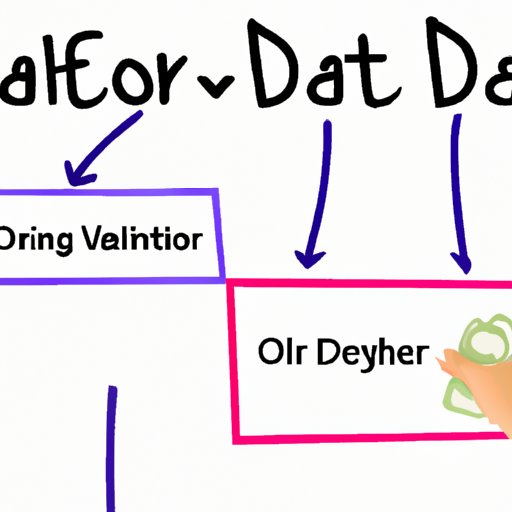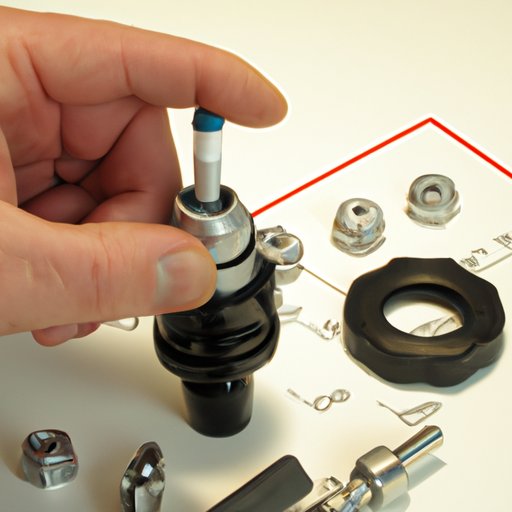Introduction
Donor Advised Funds (DAFs) are becoming an increasingly popular way for individuals and families to make charitable donations. A DAF is a type of philanthropic vehicle that allows donors to make a charitable contribution, receive an immediate tax deduction, and then recommend grants from the fund over time. In this article, we’ll explore how a DAF works, the advantages of using a DAF, how to leverage a DAF for charitable giving, the tax benefits of donating through a DAF, the process of setting up a DAF, and the different types of assets accepted in a DAF.
Explaining the Components of a DAF: A Step-by-Step Guide
Before diving into the details of how a DAF works, it’s important to understand what a DAF is and the components that make up a DAF. A DAF is a charitable giving vehicle that enables donors to make a charitable contribution, receive an immediate tax deduction, and then recommend grants from the fund over time. Here’s a step-by-step guide to understanding the components of a DAF:
What is a Donor Advised Fund (DAF)?
A Donor Advised Fund (DAF) is a philanthropic vehicle that enables donors to make a charitable contribution, receive an immediate tax deduction, and then recommend grants from the fund over time. Donors can establish their own DAF or donate to an existing DAF. A DAF is typically managed by a sponsoring organization, such as a public charity, community foundation, or commercial entity, which handles the administrative tasks associated with managing the fund.
How Does a DAF Work?
Once a donor has established a DAF, they can contribute cash, securities, and other assets to the fund. The donor receives an immediate tax deduction for the contribution and the funds are invested in accordance with the donor’s wishes. The donor can then recommend grants from the fund to qualified charities of their choice. The sponsoring organization will then disburse the funds to the chosen charities.
What are the Advantages of Using a DAF?
There are several advantages to using a DAF. First, donors can receive an immediate tax deduction for their contributions. Second, donors can take their time deciding which charities to support, as there is no requirement to disburse the funds right away. Third, donors can make larger donations than they could have made without a DAF, as the fund can be invested while waiting to be disbursed. Finally, donors can involve their family members in the decision-making process by allowing them to recommend grants from the fund.

How to Leverage a DAF for Charitable Giving
Now that you have a better understanding of the components of a DAF, let’s look at how to leverage a DAF for charitable giving. Here’s a step-by-step guide to leveraging a DAF for charitable giving:
What Types of Charitable Gifts Can be Made Through a DAF?
Donors can make a variety of types of gifts through a DAF, including cash, securities, real estate, and private company stock. Donors can also make non-cash contributions, such as artwork, jewelry, vehicles, and collectibles.
What is the Process for Making Charitable Gifts Through a DAF?
The process for making charitable gifts through a DAF is straightforward. Once a donor has established a DAF, they can contribute cash, securities, and other assets to the fund. The donor receives an immediate tax deduction for the contribution and the funds are invested in accordance with the donor’s wishes. The donor can then recommend grants from the fund to qualified charities of their choice. The sponsoring organization will then disburse the funds to the chosen charities.
What are the Benefits of Making Charitable Gifts Through a DAF?
There are several benefits to making charitable gifts through a DAF. First, donors receive an immediate tax deduction for their contributions. Second, donors can take their time deciding which charities to support, as there is no requirement to disburse the funds right away. Third, donors can make larger donations than they could have made without a DAF, as the fund can be invested while waiting to be disbursed. Finally, donors can involve their family members in the decision-making process by allowing them to recommend grants from the fund.

An Overview of Tax Benefits of Donating Through a DAF
In addition to the convenience and flexibility of donating through a DAF, there are a number of tax benefits associated with donating through a DAF. Here’s an overview of the tax benefits of donating through a DAF:
What are the Tax Benefits of Donating Through a DAF?
Donors who contribute to a DAF can take an income tax deduction for the full amount of the contribution. The amount of the deduction depends on the type of asset contributed and the donor’s adjusted gross income.
Are There Any Restrictions on Donating Through a DAF?
Yes, there are certain restrictions on donating through a DAF. For example, donors cannot deduct more than 50 percent of their adjusted gross income in any one year. Additionally, donors must ensure that all gifts are made to qualified charities in order to be eligible for the tax deduction.

Understanding the Process of Setting Up a DAF
Now that you have a better understanding of the tax benefits of donating through a DAF, let’s look at the process of setting up a DAF. Here’s a step-by-step guide to setting up a DAF:
Who Can Set Up a DAF?
Anyone can set up a DAF. However, donors should keep in mind that there are often minimum contribution requirements for establishing a DAF. Additionally, some DAFs have additional requirements such as minimum grant amounts or minimum annual contributions.
What Steps Are Involved in Setting Up a DAF?
The steps involved in setting up a DAF vary depending on the sponsoring organization. Generally, the process involves selecting a sponsoring organization, completing paperwork, and making an initial contribution.
Are There Any Fees Associated with Setting Up a DAF?
Yes, there are typically fees associated with setting up a DAF. These fees can include setup fees, annual fees, and/or transaction fees. Donors should check with their chosen sponsoring organization to determine what fees may apply.
Examining the Different Types of Assets Accepted in a DAF
Finally, let’s take a look at the different types of assets accepted in a DAF. Here’s an overview of the different types of assets accepted in a DAF:
What Types of Assets Can Be Contributed to a DAF?
Donors can contribute a variety of types of assets to a DAF, including cash, securities, real estate, and private company stock. Donors can also make non-cash contributions, such as artwork, jewelry, vehicles, and collectibles.
Are There Any Restrictions on Donating Certain Types of Assets?
Yes, there may be restrictions on donating certain types of assets. For example, some DAFs may not accept certain types of securities or private company stock. Additionally, some DAFs may only accept contributions of a certain size. Donors should check with their chosen sponsoring organization to determine what restrictions may apply.
Are There Any Tax Implications When Donating Different Types of Assets?
Yes, there are tax implications when donating different types of assets. For example, donors who contribute appreciated assets such as securities or real estate may be subject to capital gains taxes. Donors should consult a tax professional to determine the tax implications of their donations.
Conclusion
Donor Advised Funds (DAFs) are a popular way for donors to make charitable gifts. This article explored the components, benefits and processes of setting up and leveraging a DAF for charitable giving. It also examined the tax benefits and different types of assets accepted in a DAF. In summary, DAFs offer donors a convenient and flexible way to make charitable gifts, and provide a number of tax benefits. Donors considering a DAF should research the various sponsoring organizations and fees associated with setting up a DAF, and consult a tax professional to determine the tax implications of their donations.
(Note: Is this article not meeting your expectations? Do you have knowledge or insights to share? Unlock new opportunities and expand your reach by joining our authors team. Click Registration to join us and share your expertise with our readers.)
